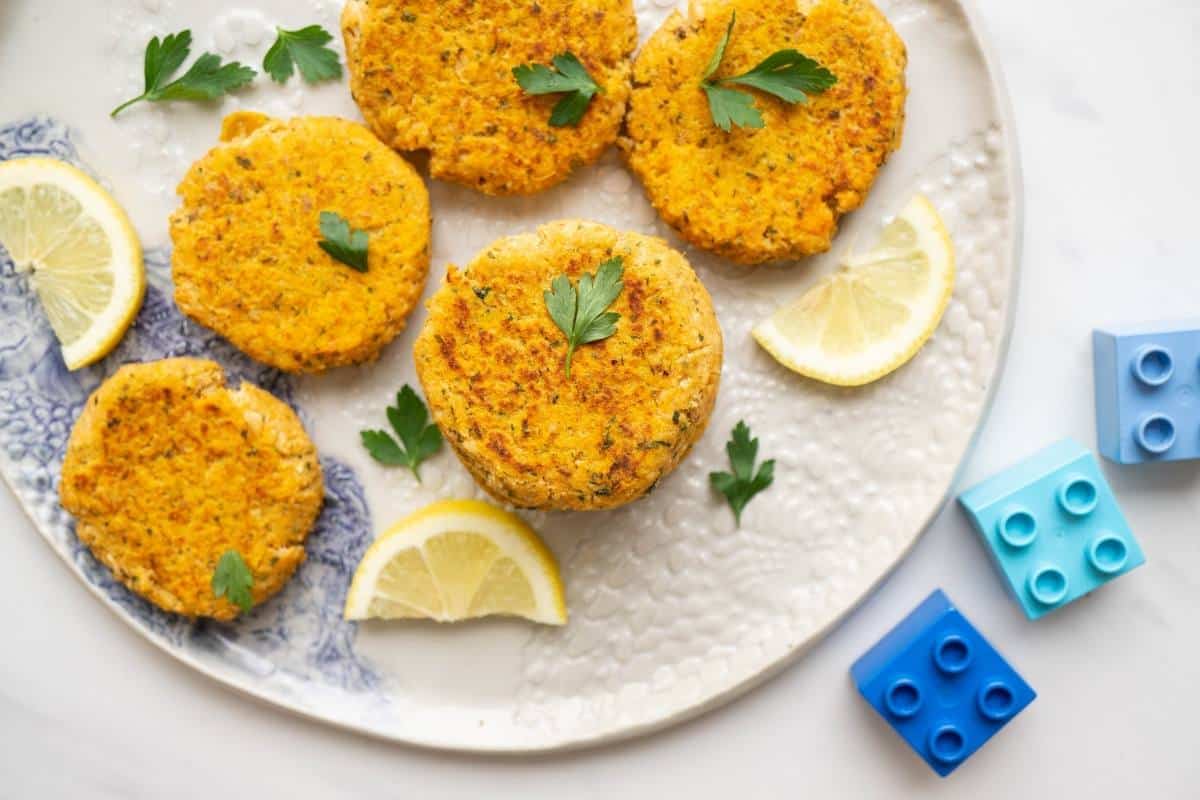Before we dive into the nitty gritty of this post, we want you to know that we file this topic of “mercury in fish” in the category of the things you should be aware of but not worried about.
Got that?
Aware of but not worried about.
Ultimately, we want you to feel informed and more relaxed after reading this post.
Here are the two main principles we’re covering:
- The dose makes the poison
- The cost/benefit analysis
At what “dose” does mercury pose a problem?
The form of mercury predominantly found in fish is methylmercury, which has shown to act as a neurotoxin above certain levels. Neurotoxin means it becomes toxic to the nervous system and can prevent normal nervous system development in infants.
Contrary to what many people believe, methylmercury doesn’t stay in the body forever. However, it is slow to be eliminated from the body. In 70-80 days, half of what was consumed remains in the body. Compare that to something like tylenol (acetaminophen), half of which is out of your system within hours.
For this reason, the World Health Organisation has set a maximum safe limit of 1.6ug/kg of body weight per day of mercury.
It’s difficult to say exactly how much methylmercury is found in different species of fish because it really depends on the water the fish lives in. Mercury enters lakes, rivers, streams, oceans, etc through rain, wind, snow, and contamination from industrial sources and mines.
What’s on the list of high mercury fish?
What we do know is that because of methylmercury’s long half-life, it accumulates (builds up) as it moves up the food chain. When predatory fish eat smaller fish, they also consume all the mercury in that smaller fish.
As such, there are certain species of fish that tend to have higher levels of mercury. We give these a “red” for: “stop, and consider how much you’re feeding your baby.”
- Shark
- Escolar
- Orange roughy
- Swordfish
- Marlin
- Fresh/frozen tuna
- Canned albacore tuna
In addition to this list, locally caught fish may also contain high levels of mercury. Local jurisdictions often monitor the level of mercury in specific water systems and report these to the public. Health Canada has a list of the different provincial advisories. Where we live in Manitoba, it can get pretty detailed. For example, walleye (sometimes referred to as pickerel) caught in the Lake of the Prairies that’s longer than 51cm is considered high mercury and should not be fed to infants.
How often can I feed my baby fish on the high mercury list?
The general recommendation is to limit high mercury fish to once per month.
This guideline is based on the assumption that babies won’t typically eat a large amount of fish at one time. However, with the popularity of baby led weaning and the knowledge that parents have now about how to safely offer handheld foods, some babies may be eating more than what the experts who made the guidelines have assumed.
Therefore, if you have a baby who really enjoys fish and will eat more than 1oz at a time, you may want to consider offering the higher mercury fish even less often. If your baby is a fish lover, limit it to once every two months instead.
Health Canada does specifically state to limit the high mercury fish to a maximum of 40g (about 1 ½ oz) per month. When it comes to canned albacore tuna, which is considered more of a medium high source of mercury, their recommendation is to limit it to 40g (about 1 ½ oz) a week.
Fish is a nutritional powerhouse
Now we come to the second and equally important point of this article!
While we do want to keep the methylmercury content in mind when choosing fish, we don’t want to shy away from eating fish altogether, especially if consuming fish is part of your family’s practice.
There are numerous benefits to eating fish, especially for babies and young children!
Let’s dive into the nutritional benefits of fish for babies
Babies’ brains are growing and developing at an extremely rapid rate. The best building blocks for brains and nervous tissue are a type of omega 3 fatty acid called docosahexaenoic acid (DHA for short), which are found abundantly in fish!
Fish and seafood also contain ecosapentanoic acid (EPA), another type of omega 3 fatty acid that’s important for a healthy cardiovascular system.
EPA and DHA also play a role in the immune system and may reduce the risk or severity of allergic diseases such as food allergies, eczema, and asthma, as well as autoimmune diseases.
In addition to the fats found in fish and seafood, these foods also contain protein, iron, zinc, iodine, and Vitamin B12; all important nutrients for a growing baby!
What’s found on the list of low mercury fish?
According to Health Canada, and the USA’s National Resources Defence Council, the following fish and seafood can be eaten frequently. We give these a “green” for “go ahead!”:
- Anchovy
- Butterfish
- Capelin
- Catfish
- Char
- Hake
- Herring
- Atlantic mackerel
- Mullet
- Plaice
- Pollock (Boston bluefish)
- Salmon
- Sardine
- Smelt
- Sole
- Tilapia
- Rainbow trout
- Lake whitefish
- Whiting
- Blue crab
- Shrimp
- Clam
- Crayfish
- Mussel
- Squid (calamari)
- Oyster
Some fish have medium levels of mercury. These can be offered less than 6 times per month, assuming your baby eats around 1 oz of fish each time. We rate these an “amber” for “proceed with caution”:
- Bass
- Carp
- Cod
- Croaker
- Halibut
- Jacksmelt (silverside)
- Mahi Mahi
- Monkfish
- Perch (freshwater)
- Sablefish
- Skate
- Snapper
- Canned light and skipjack tuna
- Weakfish (sea trout)
- Lobster
Another way to put it: if you’re a 20lb baby, you shouldn’t eat more than 1 can of tuna every 3 weeks.
What about fish that isn’t found on either the low or high mercury list?
If there are other fish that your family enjoys eating, we would encourage you to do a Google search to see what you can find on the mercury levels of that species.
In short....
To summarise this long article we can concisely say:
- Be cautious about high mercury fish but don’t be fearful.
- Feel free to serve low mercury fish to your baby in abundance worry-free, knowing that the nutritional benefits outweigh the small risks.
- Access and culture also matters! Where we live (Treaty 1 Territory), some folks have great access to pickerel and not many other fish, so then what? Sometimes doing a deep reflection about your own priorities and the greater nutrition landscape for your baby is needed.
Lastly, if you’re thinking: this is great, how can I offer my baby fish? Our e-course might be just what you need. We cover exactly how to offer each food group and what’s great is that you’ll get access for an entire year. If you’re past the learning stage and just need recipes, we have recipes for:
- Sweet Potato Salmon Cakes
- Pesto Potato Tuna Cakes
- Cajun Shrimp Cakes
In our ebook, Whole Food Recipes for Your Baby.
One more thing, you can make a family friendly tuna casserole using this recipe!

25 Recipes Designed with Your Baby in Mind
Our highly acclaimed recipe book is filled with foods containing the top nutrients your baby needs to grow and develop! Bonus: the whole family will love these recipes!







5 thoughts on “Best Fish For Babies [+ should you be worried about mercury?]”
I just wanted to thank you for the article on feeding baby fish. To me, fish is just one of those foods that I really don’t know a whole lot about when it comes to babies. This article boosted my confidence in feeding my 8mo more fish and trying to introduce more fish into my older kids diets.
Awesome! Glad we could shed some light on the wonderful aspects of fish.
Is it safe to feed baby canned fish (like canned salmon, mackerel or sardines)? I am concerned about the BPA content.
Yes, the BPA levels in canned foods is determined to be at a low level. Having said that, if it eases your mind, you can often find brands that don’t use BPA or use pouches instead.
BPA content of canned foods is determined to be low enough not to pose a health risk. But if you would feel better you can search out brands that don’t use BPA or use pouches instead.